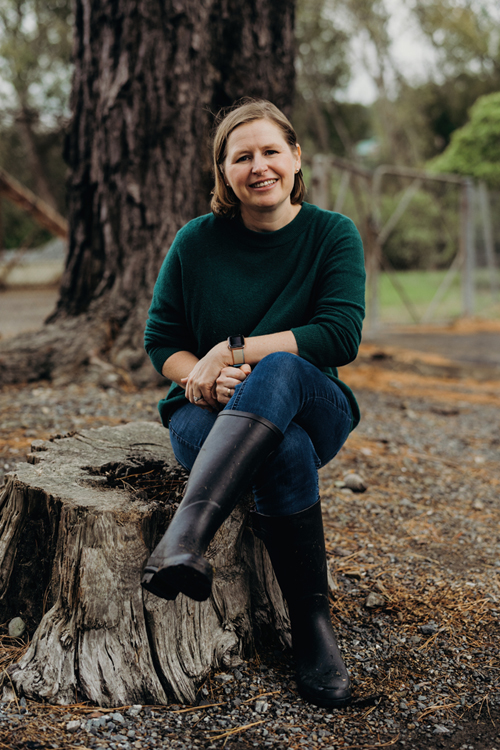20 September 2023–Throughout her career, Natalie Balfour has moved back and forth between research, management and leadership roles. “It is a bit of who I am,” said Balfour, now the head of research at Toka Tū Ake EQC, Aotearoa New Zealand’s Earthquake Commission. “I love learning about natural hazards, about people, about leadership, and I enjoy creating and sharing knowledge.”
Being open to new opportunities and challenges has led her to take on multiple roles in both her career and personal life, she said. “I remember when I was an early career researcher, being told that I might have to choose a specific thing to focus on to develop my career, but that never really sat well with me. I find having a diverse career keeps me motivated.”

For the past two years, Balfour has worked as a funder and facilitator of natural hazards research at Toka Tū Ake EQC, first as a research manager. Along with managing a research portfolio, Balfour works with scientists to build their communication capabilities and to increase the uptake of research findings into policy and practice.
Balfour was a researcher at Australian National University and GNS Science before taking a position at Toka Tū Ake EQC. That deep experience has helped with her current job, she said. “I understand there is generally a long tail to research before it will provide the intended benefit. Being familiar with the pathways that research takes to lead to benefit, especially in natural hazards, helps in assessing proposals,” she explained.
“Another advantage is sharing a common language with researchers and being able to translate complex scientific concepts for a variety of audiences,” she added.
Earthquake awareness is high in New Zealand, and “quite a few of the public even know what a PGA is,” said Balfour. One thing she wishes people knew more about is reducing the risk of earthquake impact and disruption to their homes.
“I often see a renovated home with a brand-new roof but an old brick chimney still in place. No one has told them when replacing their roof that by removing the chimney they can reduce the risk of damage to their home during an earthquake,” she said. “A great time to do this work is during renovations but there are a lot of things people do at any time, like securing furniture.”
Since her days as a postdoc at Australian National University, she has been passionate about public and educational outreach. “I worked with Professor Malcom Sambridge [at ANU] to set up the Australian Seismometers in Schools network,” she recalled. “That was a big, complicated program to set up but so much fun.”
Balfour’s advice to scientists looking to participate in more public engagement? “Just keep things short, simple and dynamic. If you want to get involved and don’t know how, you can see if your local museum and education center is looking for volunteers or see if your old school or that of a relative or child is keen to do something,” she said. “My biggest tip is to put things in context for your audience, make it relevant for them and have fun.”
Balfour and her colleagues recently supported CRISiSLab Challenge, a program for high school students on detection and warning systems run by Massey University, and her work supports museums and outreach programs. “I think my most recent outreach activity was speaking to my niece’s preschool class for 20 minutes,” she said. “We basically talked about what to do in an earthquake, how cool volcanoes are, and played with slinkies.”
She first became interested in the earth sciences as a child visiting Hawai’i, she said. “I remember standing on the cooled lava flows and looking down the cracks at the colors and just having so many questions about volcanoes and the Earth after that holiday.”
As an undergraduate at Te Herenga Waka – Victoria University of Wellington (VUW) Balfour became interested in exploration geophysics, but couldn’t get her master’s degree funded in that topic. At VUW, past SSA President Professor John Townend and Professor Martha Savage told her they had funding for a master’s student to do a project in earthquake seismology. “It was on stress and crustal anisotropy in Marlborough, New Zealand, the region that ruptured during the 2016 Kaikōura earthquake,” she explained. “I loved that project and using the seismic record to understand more about earthquakes and what causes them.”
One of Balfour’s dream projects is to “create a data hub that caters to a variety of audiences and end-user skill sets. It would take someone on a journey from discovering data and simple visualizations, to exploring and manipulating the data themselves, to the deep dive for highly skilled end users,” she said. “I’m not working in that space right now, but I still love the idea of combining data, visualization, and education.”
SSA At Work is a monthly column that follows the careers of SSA members. For the full list of issues, head to our At Work page.
